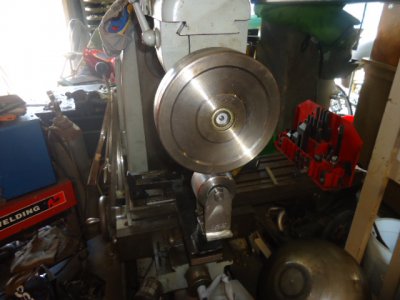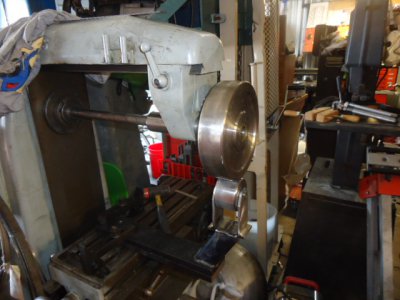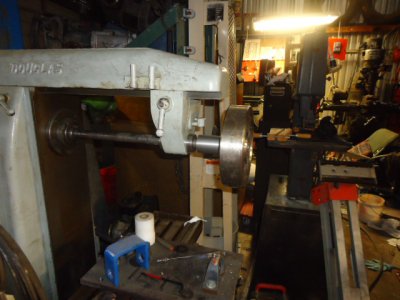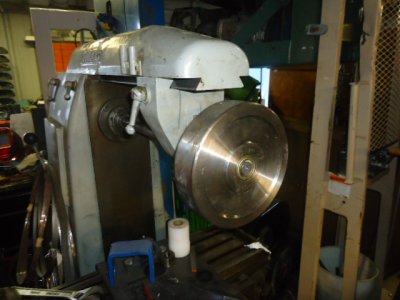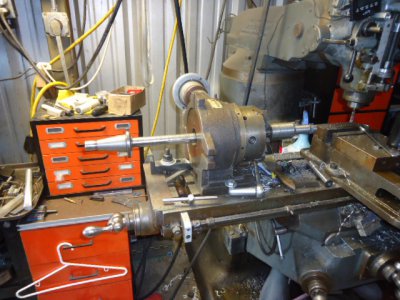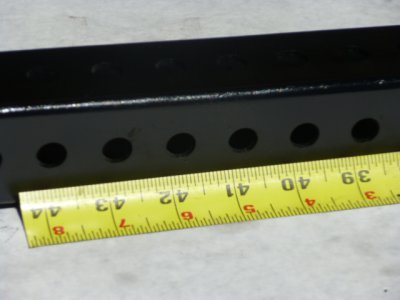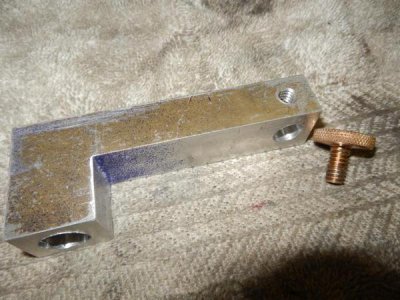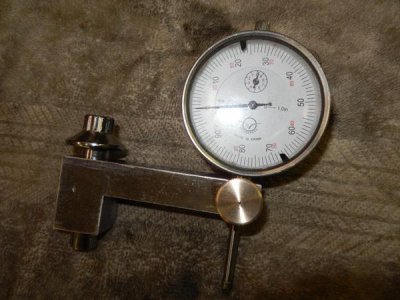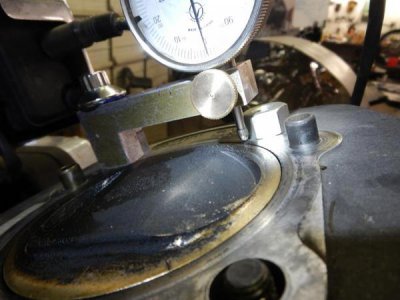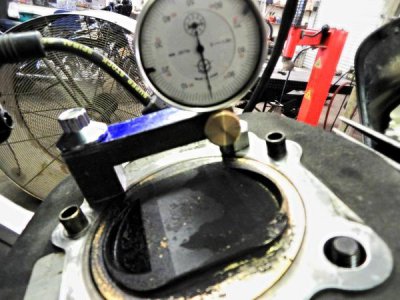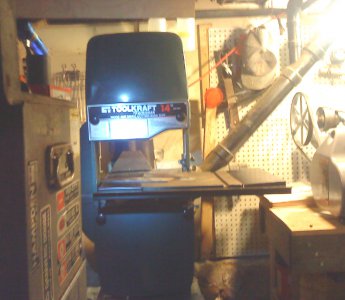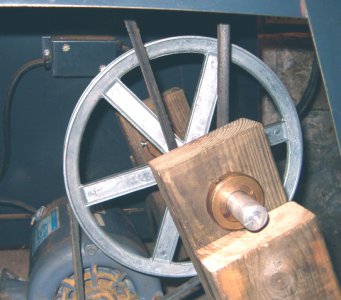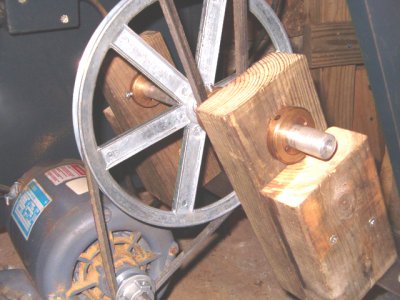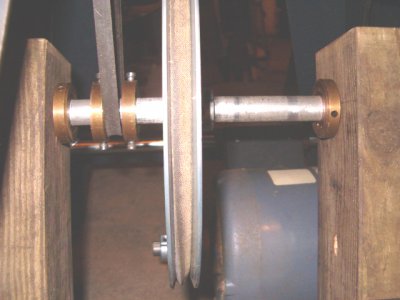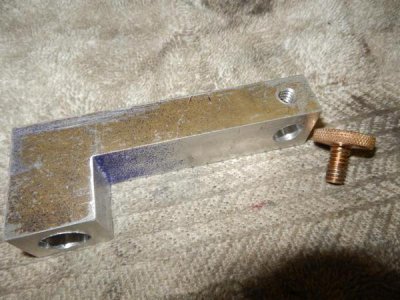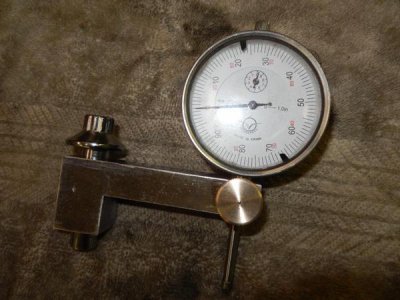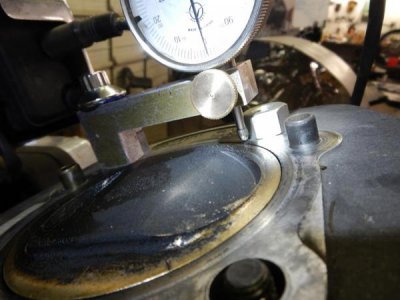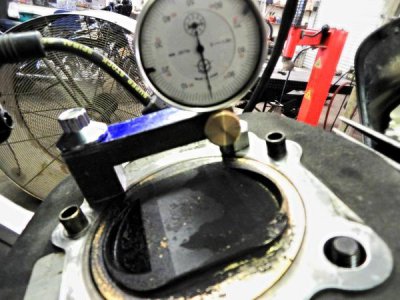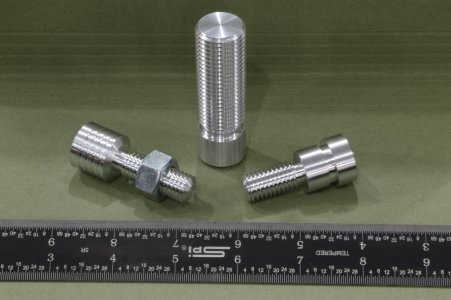- Joined
- Sep 28, 2013
- Messages
- 4,308
workshop is now set up at our new place so I've been busy relaxing in the garage.
First project is a cable stop for the front derailleur on my commuter bike. I want to run a continuous outer to the mech, like on the rear mech (keeps out crap, makes it largely maintenance free), but with under BB cable routing, there's no end stop for it. Idea was to make a simple split clamp. First, I used a holesaw to make a round out of 1/2in alu (6061?) with an offset hole. Then drilled and tapped a couple of holes so that I could saw it in half and then bolt it back together to bore out the hole to the seat tube diameter. That didn't quite work as planned but it came good in the end.
Pile of chips from slotting one half of the clamp, then the clamp itself. You can see the hole that the cable will go through and the stop for the cable end on the other side. First major metalworking project on my drill press "mill" and it went really well. Next time I think I'll slot with a smaller endmill and then finish each side, instead of trying to do it full width. Now I need to get the chemicals to set up my anodizing rig so I can anodise it black and stick it on the bike
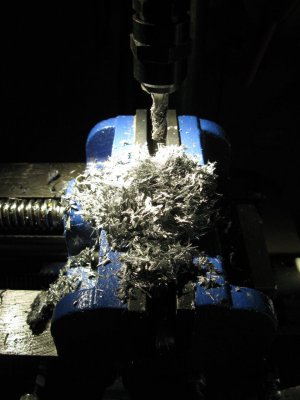
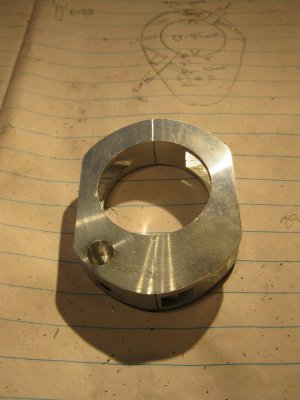
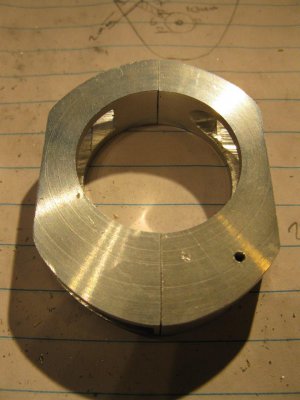
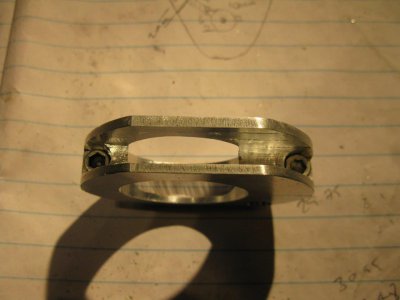
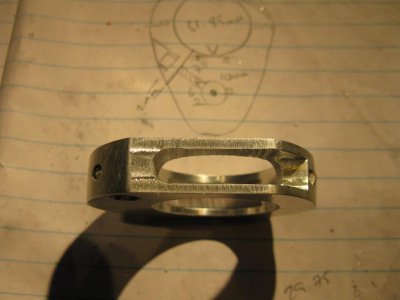
next up is something similar to act as a suspension boot retainer and mudguard mount (bike has a PITA headshok)
Also needed to organise my endmills so I can find the size/ flutes I want without having to mentally work out if 7/32 is bigger or smaller than 1/4. Used the only piece of thick wood I had and got the girls to take turns drilling the holes, which they were thrilled with until the depth stop slipped and Sophie put a divot in the vise That'll teach me to pay more attention! Now I have them all in a block on the shelf with my parallels, chuck and drills.
That'll teach me to pay more attention! Now I have them all in a block on the shelf with my parallels, chuck and drills.
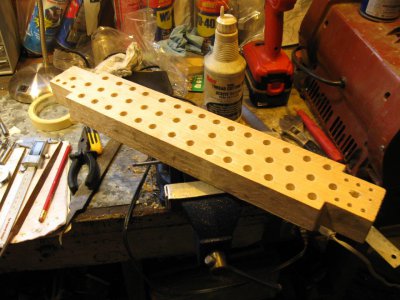
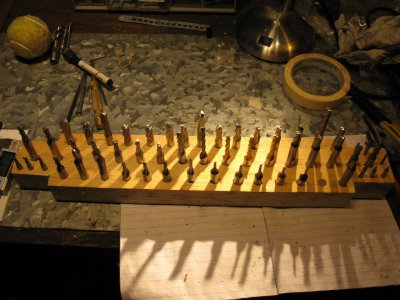







First project is a cable stop for the front derailleur on my commuter bike. I want to run a continuous outer to the mech, like on the rear mech (keeps out crap, makes it largely maintenance free), but with under BB cable routing, there's no end stop for it. Idea was to make a simple split clamp. First, I used a holesaw to make a round out of 1/2in alu (6061?) with an offset hole. Then drilled and tapped a couple of holes so that I could saw it in half and then bolt it back together to bore out the hole to the seat tube diameter. That didn't quite work as planned but it came good in the end.
Pile of chips from slotting one half of the clamp, then the clamp itself. You can see the hole that the cable will go through and the stop for the cable end on the other side. First major metalworking project on my drill press "mill" and it went really well. Next time I think I'll slot with a smaller endmill and then finish each side, instead of trying to do it full width. Now I need to get the chemicals to set up my anodizing rig so I can anodise it black and stick it on the bike





next up is something similar to act as a suspension boot retainer and mudguard mount (bike has a PITA headshok)
Also needed to organise my endmills so I can find the size/ flutes I want without having to mentally work out if 7/32 is bigger or smaller than 1/4. Used the only piece of thick wood I had and got the girls to take turns drilling the holes, which they were thrilled with until the depth stop slipped and Sophie put a divot in the vise











